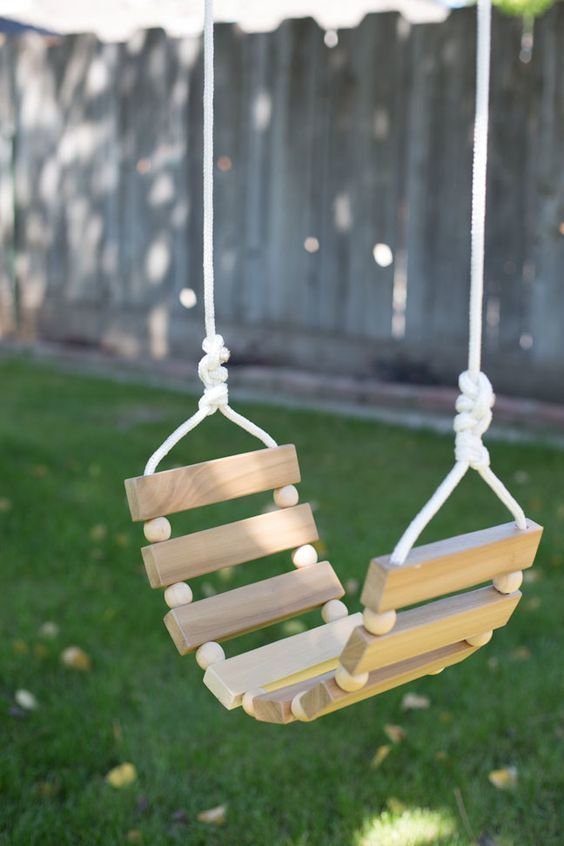Are you interested in learning how to start woodworking with hand tools? Woodworking with hand tools is a rewarding and fulfilling hobby that allows you to create beautiful, functional pieces using only the power of your own hands.
In this article, we will explore the essential hand tools for woodworking, the right type of wood to use for your projects, basic woodworking techniques and safety tips, setting up a functional workspace, beginner-friendly projects to get started, and tips for honing your skills. Whether you are a complete beginner or have some experience with power tools, learning how to work with hand tools can open up a whole new world of creativity and craftsmanship.
Woodworking with hand tools offers a unique appeal that many modern power tool methods cannot replicate. The process of shaping wood with traditional hand planes and chisels brings a sense of connection to the material and allows for greater control over the finished product. Many woodworkers also appreciate the quiet and meditative nature of working with hand tools, as well as the simplicity and lack of reliance on electricity or batteries.
In this article, we will discuss everything you need to know to get started with woodworking using hand tools. From understanding which essential hand tools to invest in, selecting the right type of wood for your projects, learning basic woodworking techniques and safety tips, setting up an efficient workspace, finding beginner-friendly projects to hone your skills, and further resources for continuous learning – we’ve got you covered.
So let’s dive into the beauty and simplicity of woodworking with hand tools.
The Essential Hand Tools for Woodworking
When it comes to woodworking with hand tools, having the right tools is essential for success. Whether you are a beginner or an experienced woodworker, there are several hand tools that are indispensable for working with wood. Below is a list of essential hand tools that every woodworker should have in their toolkit:
1. Chisels: Chisels are used for carving, shaping, and smoothing wood. They come in a variety of sizes and shapes, making them versatile for different woodworking tasks.
2. Hand Planes: Hand planes are essential for shaping and smoothing wood surfaces. They can be used to flatten, smooth, and shape wood to create precise angles and edges.
3. Measuring Tools: Accurate measurements are crucial in woodworking, so having measuring tools like a combination square, marking gauge, and ruler is essential for ensuring precision in your projects.
4. Saws: A set of high-quality saws including a crosscut saw and dovetail saw will allow you to make accurate and clean cuts in your wood.
5. Clamps: Clamps are essential for securing pieces of wood together during assembly and glue-up processes. They come in various sizes and styles to accommodate different types of woodworking projects.
Knowing how to start woodworking with hand tools means understanding the purpose and proper use of each tool listed above. Investing in high-quality hand tools will not only make your woodworking experience more enjoyable but also ensure the quality of your finished projects. With these essential hand tools at your disposal, you’ll be well-prepared to tackle a wide range of woodworking projects with confidence and precision.
Selecting the Right Type of Wood for Your Projects
Understanding Different Types of Wood
Before starting any woodworking project, it’s essential to have a good understanding of the different types of wood available. Hardwoods such as oak, maple, and cherry are popular choices due to their durability and beautiful grain patterns.
Softwoods like pine and cedar are also commonly used for their workability and affordability. Each type of wood has its own unique characteristics, so it’s important to consider factors such as strength, color, and ease of working with the wood when choosing the right type for your project.
Consider the Project Requirements
When selecting wood for a project, it’s crucial to consider the specific requirements of the project. For example, if you’re building a piece of furniture that will need to support a significant amount of weight, you’ll want to choose a strong and durable hardwood. On the other hand, if you’re working on a more decorative or ornamental piece, you may prioritize aesthetic qualities such as grain pattern and color.
Where to Source Quality Wood
Whether you’re looking for hardwoods or softwoods, sourcing quality wood is essential for a successful woodworking project. Local lumberyards and specialty woodworking stores are great places to find a variety of high-quality woods.
Additionally, online suppliers can provide access to a wide range of wood species that may not be readily available in your area. When purchasing wood, always inspect it for defects such as warping or splitting, and make sure it’s properly dried and seasoned for woodworking.
By understanding the different types of wood available, considering project requirements, and sourcing quality materials, you’ll be well-equipped to select the right type of wood for your hand tool woodworking projects.
Basic Woodworking Techniques and Safety Tips
Woodworking with hand tools requires some essential techniques and safety precautions to ensure a successful and enjoyable experience. Whether you are a beginner or have some experience with power tools, mastering these basic techniques will set the foundation for your woodworking journey. Additionally, incorporating safety tips into your practice will help prevent accidents and injuries.
Basic Woodworking Techniques
One of the fundamental skills in woodworking with hand tools is learning how to properly use chisels, hand saws, hand planes, and other essential tools. For example, understanding how to sharpen and hone the cutting edge of a chisel is crucial for achieving clean and precise cuts. Learning to effectively use a hand plane to smooth and flatten wood surfaces is also an important technique to master.
Safety Tips
When working with hand tools, it’s essential to prioritize safety at all times. Always wear appropriate safety gear such as eye protection and ear protection when using hand saws or chisels. Additionally, make sure your workspace is well-lit and free of clutter to avoid accidents. It’s also important to keep your tools sharp, as dull tools can slip and cause injury.
Remember that practice makes perfect when it comes to mastering basic woodworking techniques with hand tools. Take your time to learn each skill thoroughly before moving on to more complex projects.
Learning how to start woodworking with hand tools can be an extremely rewarding journey, but safety should always be the number one priority during this process. By mastering basic woodworking techniques and implementing safety tips into your practice, you’ll be well-equipped to enjoy the art of woodworking while staying safe in the workshop.
Setting Up a Functional and Efficient Workspace for Hand Tool Woodworking
When starting woodworking with hand tools, one of the most important aspects to consider is setting up a functional and efficient workspace. A well-organized and dedicated space will not only make your woodworking projects more enjoyable, but it will also ensure safety and efficiency in your work. The following are essential steps to consider when setting up your woodworking workspace.
First, designate a specific area in your home or garage where you can set up your woodworking bench and tools. It’s important to have enough space to move around comfortably while working on your projects. Make sure that the area is well-ventilated and well-lit to ensure safety and precision in your work.
Next, invest in a sturdy workbench that will serve as the central hub of your woodworking projects. Look for a workbench that is heavy and stable, as it will provide a solid foundation for working with hand tools such as chisels, planes, and saws. Additionally, consider adding a tool storage system near your workbench to keep all your hand tools organized and easily accessible.
Lastly, equip your workspace with essential accessories such as clamps, vises, and measuring tools. These accessories will help secure your wood pieces in place while you work on them, as well as ensure accuracy in cutting and shaping. By creating an organized and fully-equipped workspace, you’ll be well-prepared to start exploring the art of woodworking with hand tools.
| Woodworking Workspace Essentials | Description |
|---|---|
| Designated Area | Choose a specific area with ample space for movement |
| Sturdy Workbench | A heavy and stable workbench serves as the central hub of projects |
| Tool Storage System | Keep hand tools organized and easily accessible near the workbench |
| Accessories | Add clamps, vises, measuring tools for accuracy and security in working on wood pieces. |
Beginner-Friendly Woodworking Projects to Get Started
Woodworking with hand tools can be a rewarding and fulfilling hobby to pursue. If you’re just starting out, it’s important to choose beginner-friendly projects that will help you build essential skills while creating something practical or beautiful. Here are a few woodworking projects that are perfect for beginners looking to get started with hand tools.
One great project for beginners is building a simple wooden toolbox. Not only will this project allow you to practice measuring, cutting, and joining wood, but it will also result in a useful tool for your future woodworking endeavors. Another beginner-friendly project is making a wooden cutting board. This project will introduce you to the process of smoothing and finishing wood, as well as the basics of creating a functional kitchen item.
A third option for those new to woodworking with hand tools is crafting a wooden picture frame. This project will give you the opportunity to practice making precise mitered corners, as well as sanding and finishing techniques. These simple yet rewarding projects are an excellent way to start honing your woodworking skills.
| Woodworking Project | Description |
|---|---|
| Wooden Toolbox | A project that allows beginners to practice measuring, cutting, and joining wood while creating a useful tool. |
| Wooden Cutting Board | An opportunity to learn about smoothing and finishing wood, creating a practical kitchen item. |
Tips for Honing Your Woodworking Skills and Mastering Hand Tool Techniques
So, you’ve gathered your essential hand tools, selected the perfect type of wood for your project, and set up a dedicated workspace for woodworking with hand tools. Now it’s time to hone your skills and master the techniques that will take your projects to the next level. Here are some tips to help you become a proficient hand tool woodworker:
Practice Proper Technique
To truly master woodworking with hand tools, it’s important to focus on using proper technique. Whether it’s sharpening chisels, using hand planes effectively, or mastering traditional joinery methods, practice makes perfect.
Seek Guidance and Mentorship
Consider seeking guidance and mentorship from experienced hand tool woodworkers in your community or online. Learning from someone with years of experience can provide invaluable insight and help you avoid common pitfalls as you develop your skills.
Learn From Mistakes
Don’t be afraid to make mistakes – they are an inevitable part of the learning process. Instead of getting discouraged, use each mistake as an opportunity to learn and improve. Analyze what went wrong and figure out how you can do better next time.
Explore Advanced Techniques
Once you have mastered the basics, challenge yourself by exploring more advanced woodworking techniques with hand tools. This could include intricate joinery methods, complex shaping with hand planes, or creating finely detailed carvings with chisels.
By following these tips and dedicating yourself to continuous learning and improvement, you’ll be well on your way to becoming a skilled hand tool woodworker capable of tackling even the most challenging woodworking projects.
Additional Resources and Further Learning Opportunities for Aspiring Hand Tool Woodworkers
In conclusion, starting woodworking with hand tools can provide a rewarding and satisfying experience for anyone who appreciates the beauty and simplicity of working with wood. By familiarizing oneself with the essential hand tools, selecting the right type of wood, mastering basic woodworking techniques, and setting up a functional workspace, beginners can embark on this fulfilling journey.
With dedication and patience, aspiring hand tool woodworkers can hone their skills, take on more challenging projects, and continue to expand their knowledge through additional resources and learning opportunities.
One of the best ways to start woodworking with hand tools is by learning from experienced woodworkers through workshops, classes, or mentorships. Joining a local woodworking club or association can also provide valuable support and guidance for those looking to enhance their skills. Additionally, there are countless online tutorials, forums, and books dedicated to hand tool woodworking that offer in-depth instruction and inspiration for beginners.
Aspiring hand tool woodworkers should also consider investing in quality tools and equipment while being mindful of safety practices at all times. By starting with beginner-friendly projects and gradually progressing to more complex endeavors, individuals can gradually build their confidence and expertise in this timeless craft. Patience and perseverance are key as mastering hand tool techniques takes time, but the rewards of creating handmade pieces with these traditional methods are truly invaluable.
Frequently Asked Questions
Can You Do Woodworking With Only Hand Tools?
Yes, woodworking can definitely be done using only hand tools. While power tools may make the process faster and more efficient, many woodworkers still prefer to use traditional hand tools for their woodworking projects. Hand tools like chisels, hand planes, saws, and carving tools can accomplish a wide variety of tasks in woodworking.
What Tools Are Needed to Begin Woodworking?
To begin woodworking with hand tools, you will need a basic set of tools including a few different types of saws (such as a back saw and a coping saw), chisels of various sizes, a block plane or bench plane, marking and measuring tools like a combination square and marking gauge, as well as clamps to hold your workpieces steady.
With these essential hand tools, you can start practicing the foundational skills of woodworking.
What Is the Easiest Wood to Work With Hand Tools?
The easiest wood to work with hand tools tends to be softer woods like pine, cedar, or poplar. These woods are relatively easy to cut and shape with hand saws and chisels, making them ideal for beginners who are just learning how to use traditional hand tools in their woodworking projects.
As woodworkers gain experience and skill, they may move on to more challenging woods like oak or maple.

Hi everyone! I’m a woodworker and blogger, and this is my woodworking blog. In my blog, I share tips and tricks for woodworkers of all skill levels, as well as project ideas that you can try yourself.





